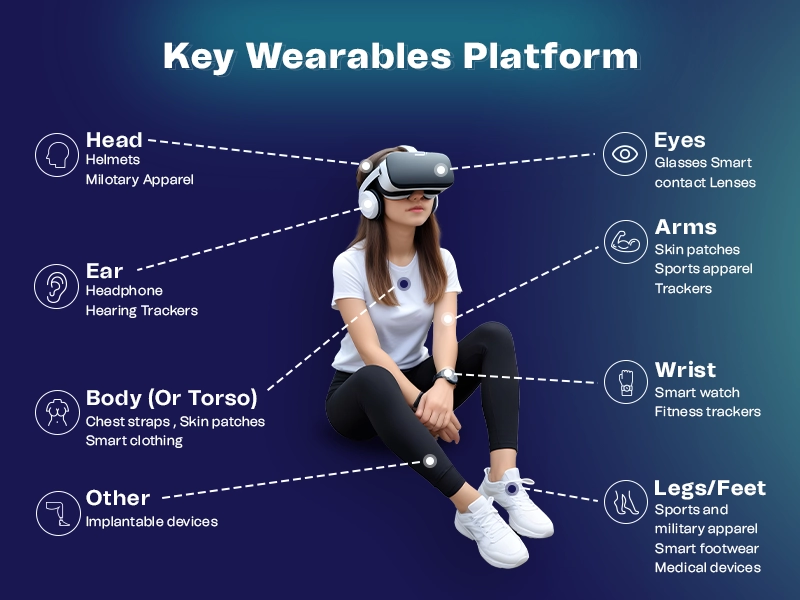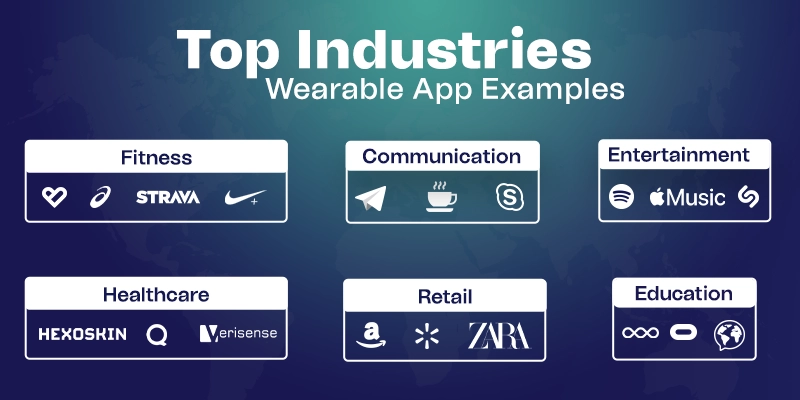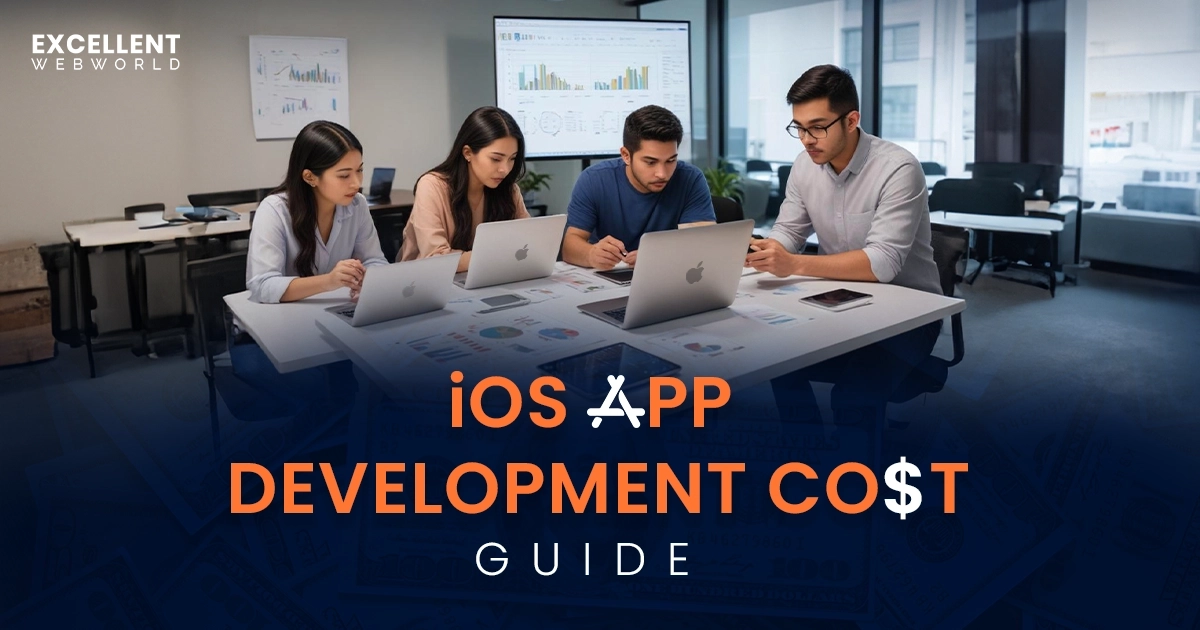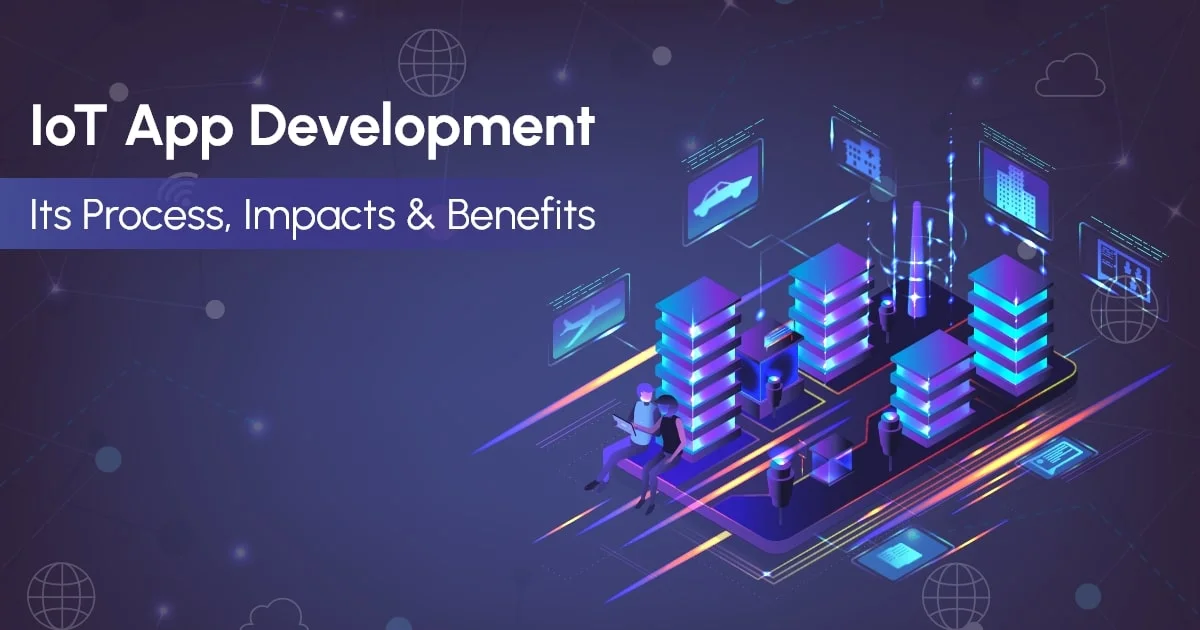
Quick Summery
In this article on wearable app development, we’ll explore the key considerations, emerging trends, and best practices that define this dynamic and exciting area of technology.
Have you heard about Human AI PIN? If you live under a rock, here is an explanation of our discussion. It is a multimode wearable device that almost every reviewer and influencer has slammed for nearly everything it does.
It’s not just about the Humane AI pin; various wearable startups fail due to multiple things they avoid during the wearable app development process.
The development of apps for wearable technology involves unique challenges and opportunities. Unlike traditional mobile apps, wearable apps require a focus on delivering concise, actionable data and intuitive user experiences on smaller screens. The potential applications of wearable technology are vast, ranging from health and fitness tracking to navigation, communication, and even augmented reality.
Thus, here is a guide that focuses on the things you need to consider for wearable app development, not to be another Humane AI pin.
Let’s first get into the difference between wearable apps and mobile apps.
What is a Wearable App and How Does it Differ from a Mobile App?
Before knowing about wearable apps, let’s first understand wearables. You can consider wearables as devices that you wear on your body just like any other accessories.
The wearables are probably connected to the smartphone to share and receive data between the device and the network. And coming to the wearable application receives the data from those wearables. Such apps have access to devices’ hardware and operating system.
Both wearable and mobile apps play significant roles in the digital ecosystem, enhancing how users interact with technology. Wearable apps are built for quick, efficient interactions and real-time data monitoring, making them ideal for on-the-go use. In contrast, mobile apps offer more extensive functionalities and richer user experiences, suitable for longer and more complex interactions.
Besides that, wearable apps cannot be cross-platform as they use device-specific APIs. Here is a list of a few examples of wearable platforms.
Things to Keep in Mind for Wearable App Development
1. The Purpose of the App
The moment you start thinking about the wearable device app development idea, the first and foremost thing is to define the purpose of the application. The purpose of the application depends majorly on your target audience and what you want to deliver to your end users. Rather than providing an all-in-one solution, you can focus on one primary problem your app will solve.
For example, if you want to replicate the phone’s functionalities, allowing your users to track their basic vitals, then smartwatch app development is more suitable. The purpose of wearable applications is to make it more straightforward for even inexperienced people to understand and make clear to users what the app will offer.
2. Wearable Device App Development Tech stack
Once you define the purpose of your app, the next important step is to determine the app development tech stack. Every aspect of the wearable device app development process should be checked, from the operating system to the app development technology.
The success and failure of wearable app development depend on the tech stack involved. So, make sure you choose the app development tech stack to minimize your development time and efforts while delivering an amazing user experience for various operating systems, such as Windows, Mac, Android, iOS, VisionOS, WearOS, and more.
It is advisable to hire Flutter developers for wearable app development. Being one of the leading cross-platform app development technologies, Flutter can help developers write a single codebase for multiple operating systems. The cross-platform compatibility will allow you to deliver a unique user experience on almost any device your user prefers.
3. Data Security
It is no secret that wearable devices access almost every piece of information, from health data to the user’s voice and eye gestures. Thus, protecting the user’s data from any data theft or leak becomes essential. Sharing, accessibility, and data exchange expose user data to theft, so data protection should be considered starting from the development phase.
Ensure your wearable app development team understands the basics of cybersecurity and the security considerations of HIPAA compliance so you don’t have to deal with the consequences of data leaks later on.
4. UI/UX of Wearable Device
What is a wearable app without a fantastic look and feel? The UI/UX determines the look and feel of the app. However, learning the difference between UI and UX is more important. As wearable devices typically have smaller screens and fewer controls, app designers must keep the user interface in mind.
UI/UX designers should consider best practices in web design and wearable technology. This can help them design the app’s interface that transitions between traditional desktop and mobile screens and the small displays of wearable devices without compromising usability or visual appeal.
One of the challenges wearable app designers face is designing simpler, minimalist, fully functional, and feature-rich designs simultaneously. So, delivering wearable applications with features is essential while keeping the user experience in the center.
5. Memory and Battery Consumption
Wearable devices usually come with low memory and battery power, and extra code or stretched code structure enhances the load on tiny devices. Thus, when it comes to wearable device app development, developers need to write a strictly structured codebase that can offer a unique user experience to users with optimized battery consumption.
An overstretched codebase can maximize the load time, which can heat the wearable devices. As wearable devices can directly contact human skin, they can also increase health risks. Thus, reaching out to experienced wearable app development companies is advisable. You don’t have to worry about such issues, as their years of experience and expertise minimize the chances of such problems.
These are some primary considerations for wearable app development, but is it worth investing in?
Yes, it is. Various industries are growing more significant than ever, facilitating a superior user experience for their end users. Let’s look at the sectors reaching new heights with wearable technology.
The Future Horizon of Wearable App Development in Different Industries
1. Healthcare
The healthcare industry has seen the highest growth in the consumption of wearable technology. According to Fortune Business Insight, the global market for wearable medical devices is projected to grow from $73.77 billion in 2023 to $428.92 billion by 2030, at a CAGR of 28.6%.
Wearable devices are not relatively new to the market, but advancing wearable technology can advance the healthcare industry. From sleep tracking to body vital tracking, wearable app development has grown tremendously in the healthcare industry. The boost of wearable technology in the healthcare industry has also directly influenced the insurance industry’s growth.
2. Fitness
Wearable applications are most common in the fitness market. It enables users to take proactive control of their wellness by providing detailed insights, personalized guidance, and motivational tools. Besides, wearable apps track daily steps, distance covered, and calories burned, providing a clear picture of physical activity levels
As technology continues to advance, the capabilities of these apps will only expand, offering even more sophisticated tools for managing fitness and overall health. Henceforth, building a fitness app with wearable technology has become a mandatory thing in today’s time.
3. Entertainment
Along with the healthcare industry, the entertainment industry has grown tremendously because of wearable technology. The introduction of Apple Vision Pro is enough to justify that statement. In addition to allowing users to transform their space with a virtual environment, Apple Vision Pro enables users to watch movies and series in immersive environments.
The development of wearable apps transforms how we engage with entertainment and media through various intelligent wearable devices, such as VR headsets, controllers, and smart eyewear. Thanks to advancements in wearable technology, we can now access a wide range of entertainment options in the palm of our hands, from virtual tours to VR roller coasters to gaming experiences.
4. Education
Gone are the days when we learned only from physical textbooks. The education sector has come a long way, from e-learning to distance learning to virtual learning. Wearable application development facilitates virtual learning that enhances learning outcomes. In addition, wearable technology facilitates in-site practices with minimum hazards.
For example, it allows medical students to get a real surgery experience without practically participating in one, and civil engineering students can explore the experience of being on-site while being in their place.
These innovations prove that the world has gone beyond just smartwatch app development. Wearable technology is enhancing the learning experience for learners all around the globe. Developing a education application with wearable technology that facilitates an improved learning experience for learners will have a bright scope in the future.
5. Retail
We have been using and creating IoT in retail apps for a long time. But, adopting wearable technology is the way to improve your customers’ shopping experience. Retailers can use wearable apps to offer virtual tryouts and personalized user experiences. Wearable tech can also enable contactless payments and speedy checkout.
In addition, you can allow your customers to browse store items on in-store screens, try them out in real time, and pay without visiting the billing desk. To take it further, you can expand tap-and-pay capabilities from cards to intelligent wearables, allowing customers to pay directly using their smartwatches or intelligent rings.
Furthermore, you can collect health data from customers to offer them personalized items. For instance, you can suggest sugar-free items to customers with high sugar levels, which they can purchase directly from the app.
In short, wearable app development has a higher potential in the retail industry than it seems. To expand your horizons in this sector through wearable device applications, you must connect with trusted app development companies.
6. Communication
Communication technologies have significantly advanced, from checking messages on smartwatches to attending virtual meetings via devices like Apple Vision Pro. Wearable devices allow users to receive texts and calls without using their phones, enabling them to reply promptly.
Additionally, VR headsets and other technologies allow users to attend virtual calls in immersive environments, providing interactive user experiences. These advancements in communication have made it more convenient for users to communicate from remote locations, leading to increased engagement in the education industry and facilitating accessible communication in professional remote settings.
The Ending – Wearable App Development
In conclusion, wearable app development can help expand your business to new horizons, regardless of the industry you belong to.
Developing wearables requires a unique approach, balancing the need for compact, glanceable interfaces with the demand for powerful, real-time functionality. The best wearable apps leverage the strengths of these devices—such as their sensors, portability, and connectivity—to provide users with seamless experiences that enrich their personal and professional lives.
All you need is the support of top wearable app developers.
You can rely on the experts at Excellent Webworld – a wearable app development company, who has over a decade of experience in app and web development, including Android wearable app development. Entrust your app idea to them and witness its journey as they turn it into a fully functional mobile application.
FAQs
The best suggestion for app development for wearable devices is to get in touch with an experienced wearable app development company. Make sure they have top wearable app developers who can work as per your requirements.
Choose a platform (like watchOS for Apple Watch or Wear OS for Android), and set up the appropriate development environment. Then, design a simple, intuitive interface and develop core features that Choose a platform (like watchOS for Apple Watch or Wear OS for Android), and set up the appropriate development environment. Then, design a simple, intuitive interface and develop core features that leverage the smartwatch’s sensors and capabilities. Later on, test the app extensively on real devices to ensure smooth performance and user satisfaction before publishing it to the relevant app store
You can hire a wearable app development company like Excellent Webworld. They will build the best wearable app solutions based on your requirements.
Wearable app developers are responsible for creating applications specifically designed for wearable devices like smartwatches, fitness trackers, and smart glasses. Their tasks typically include conceptualization, designing, programming, sensor integration, testing, performance optimization, and privacy.
The future of wearable app development includes advancements in AI and machine learning for personalized health insights and predictive analytics. Also, enhanced integration with IoT and augmented reality (AR) will expand wearable applications beyond health and fitness

Article By
Mahil Jasani began his career as a developer and progressed to become the COO of Excellent Webworld. He uses his technical experience to tackle any challenge that arises in any department, be it development, management, operations, or finance.





